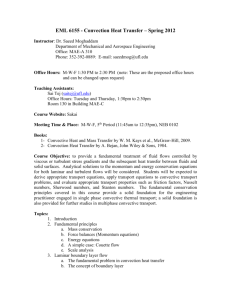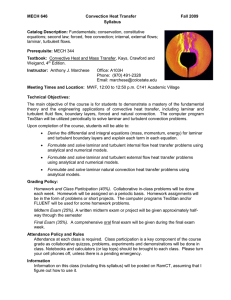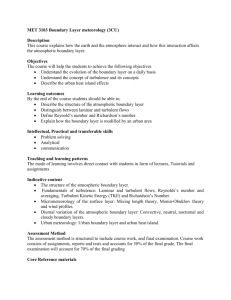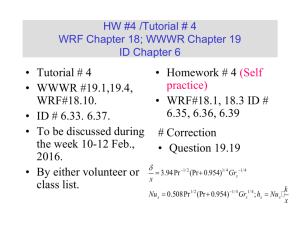ME 345 Heat Transfer
advertisement
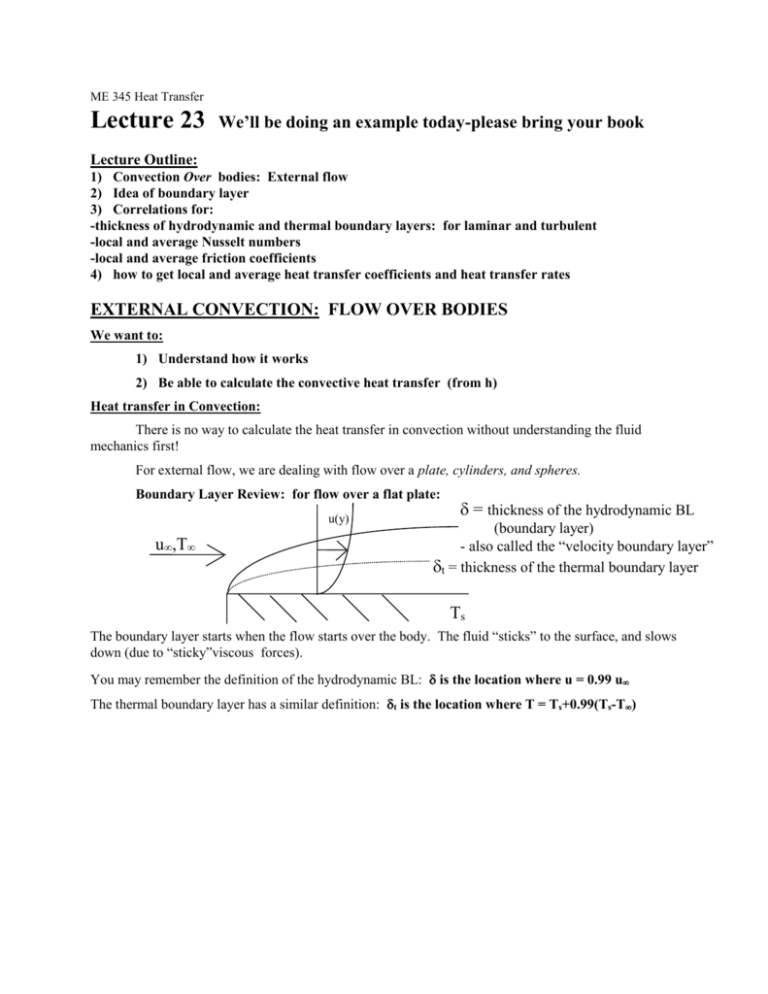
ME 345 Heat Transfer Lecture 23 We’ll be doing an example today-please bring your book Lecture Outline: 1) Convection Over bodies: External flow 2) Idea of boundary layer 3) Correlations for: -thickness of hydrodynamic and thermal boundary layers: for laminar and turbulent -local and average Nusselt numbers -local and average friction coefficients 4) how to get local and average heat transfer coefficients and heat transfer rates EXTERNAL CONVECTION: FLOW OVER BODIES We want to: 1) Understand how it works 2) Be able to calculate the convective heat transfer (from h) Heat transfer in Convection: There is no way to calculate the heat transfer in convection without understanding the fluid mechanics first! For external flow, we are dealing with flow over a plate, cylinders, and spheres. Boundary Layer Review: for flow over a flat plate: u(y) u,T = thickness of the hydrodynamic BL (boundary layer) - also called the “velocity boundary layer” t = thickness of the thermal boundary layer Ts The boundary layer starts when the flow starts over the body. The fluid “sticks” to the surface, and slows down (due to “sticky”viscous forces). You may remember the definition of the hydrodynamic BL: is the location where u = 0.99 u The thermal boundary layer has a similar definition: t is the location where T = Ts+0.99(Ts-T) Correlations: Basic technique: 1) Determine what kind of flow you have: external over plate? Cylinder? Sphere? 2) Find (or calculate) the Reynolds number and Prandtl number for the flow : you will need to use what is called a “film” temperature Tf when you find your fluid properties. It is an average temperature of your fluid in the BL. Tf = (Ts + T)/2 3) Determine whether the flow is laminar, or if it becomes turbulent (and if is DOES become turbulent, where that happens!!) 4) For flat plates, you can look up the following correlations in your text for laminar and turbulent flow: - BL thicknesses - local and averaged Nu - Friction coefficient (local and averaged) 5) For cylinders and spheres, you can get correlations for average Nusselt number over the body These are given in Table 7.9 on pages 436-7. We will again start by practicing on a problem. Group Exercise: 1) Get into the normal groups and choose the usual suspects. 2) Do problem 7.2 a-c. If you get done, take a look at d.

